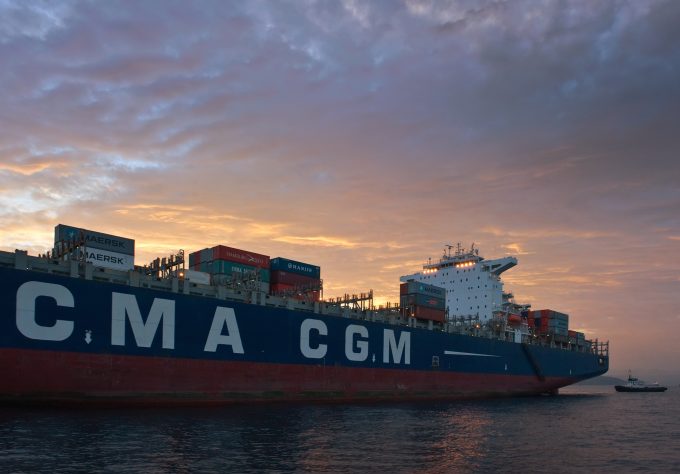Liners unveil Asia-Europe FAK price hikes to arrest steady rate decline
Container shipping lines are looking for a hike in Asia-Europe spot freight rates, announcing a ...

CMA CGM posted a net profit of $323m for the third quarter, compared with the $268m loss in the same period of 2016, adding to the $320m positive achieved at the H1 stage.
The French carrier’s revenue leapt 27.7% on the previous year, to $5.7bn, from an 11.6% increase in volume carried to 4.98m teu – a new record figure.
CMA CGM successfully raised its average rate per teu by 14.4%, on a par with Maersk Line’s average rate climb of 14%, but below the best-in-class improvement of OOCL’s 20%.
These three carriers were able to take full advantage of higher contract and spot rates during the period – in contrast to German carrier Hapag-Lloyd, which recorded a disappointing average rate improvement of just 4% in the quarter.
During the period CMA CGM’s bunker bill soared by some 26% to $631m, but the carrier did not, however, declare the average cost paid per tonne of fuel or the split between heavy fuel oil and low-sulphur bunkers.
With a return on invested capital of 10.4% and an ebit margin of 10%, CMA CGM said it had “maintained its leadership within the sector in terms of profitability”.
It added: “This performance results from the group’s ability to leverage its size and global network to optimise both revenues and costs, despite rising fuel prices.”
CMA CGM attributed its volume growth to membership of the Ocean Alliance, where it operates around 36% of the total capacity. It said that especially strong growth had been seen on the Asia to US and Asia-Europe trades, as well as most of the north-south and intra-regional routes.
With reference to its order for nine 22,000 teu LNG-ready ULCVs for delivery between 2020 and 2021, CMA CGM said a minimum of 70% of the approximate $1.5bn order “is expected to be financed through borrowings currently under discussion”.
It added that the decision to equip its nine future ships with engines designed to run on LNG was “an innovation never made before in the industry”, and constituted “a firm commitment to the protection of the environment and to ocean conservation”.
The restructured South Korean carrier, Hyundai Merchant Marine (HMM), was the only box line not to record a third-quarter profit as container lines benefited from a combination of improved contract rates and relatively healthy spot rates, boosted by continued robust demand.
However, since the end of the third quarter, Hapag-Lloyd for example noted in its interim results presentation recently that there had been “some softening in rates”.
Despite the advent of the slack season, carriers have so far been reluctant this year to implement winter networking capacity reductions by withdrawing tonnage and thus pushing up rates.
Nevertheless, notwithstanding a more challenging fourth quarter, ocean carriers are still expected to report satisfactory results for the full-year.
Comment on this article